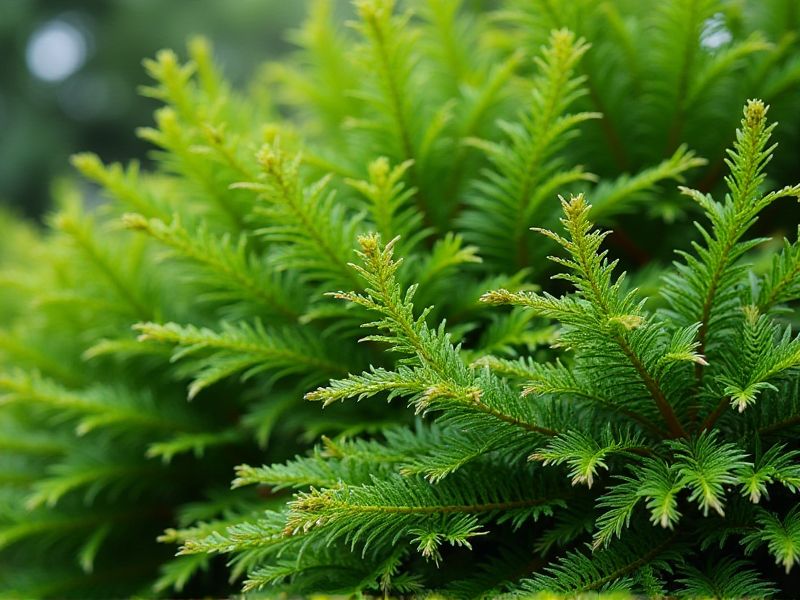
Evergreen plants, such as pine trees, holly shrubs, and boxwoods, retain their leaves throughout all seasons, providing consistent greenery in your landscape. These plants are vital for creating privacy screens and windbreaks, enhancing outdoor spaces even during winter months. They play a crucial role in local ecosystems by offering habitat and food sources for various wildlife. When selecting evergreen varieties, consider factors like climate, soil type, and space requirements to ensure optimal growth. Incorporating evergreens into your garden design can enhance its aesthetic appeal while minimizing maintenance needs.
List of some Evergreen plants that maintain year-round foliage
- American Holly (Ilex opaca)
- Mountain Laurel (Kalmia latifolia)
- Japanese Laurel (Aucuba japonica)
- Eastern Red Cedar (Juniperus virginiana)
- Southern Magnolia (Magnolia grandiflora)
- Boxwood (Buxus sempervirens)
- Italian Cypress (Cupressus sempervirens)
- Rhododendron (Rhododendron spp.)
- Live Oak (Quercus virginiana)
- Hemlock (Tsuga canadensis)
Important things about Evergreen plants that maintain year-round foliage
Definition Of Evergreen Plants
Evergreen plants are characterized by their ability to retain foliage throughout all seasons, providing continuous greenery. This group includes various tree species like pine, spruce, and cedar, alongside shrubs such as holly and boxwood, which maintain their leaves year-round. These plants play a crucial role in landscaping and gardening, offering aesthetic appeal, privacy, and windbreaks. By incorporating evergreen plants into your outdoor space, you can ensure vibrant color and structure, even during winter months when many other plants may be dormant.
Types Of Evergreen Plants
Evergreen plants, such as conifers, holly, and certain species of ferns, retain their foliage throughout the year, providing consistent greenery in landscapes. These plants come in various forms, including trees, shrubs, and ground covers, catering to diverse gardening needs and aesthetic preferences. By planting evergreens like the majestic pine or compact boxwood, you not only enhance your garden's visual appeal but also create a backdrop for seasonal flowers. Your choice of evergreens can significantly influence local wildlife, offering habitats and food sources for birds and beneficial insects year-round.
Adaptability To Various Climates
Evergreen plants, such as holly, pine, and boxwood, exhibit remarkable adaptability to diverse climates, thriving in both temperate and tropical environments. Their needle-like leaves, rich in chlorophyll, enable photosynthesis year-round, allowing them to withstand cold winters and scorching summers alike. This resilience is attributed to their unique physiological traits, including a waxy cuticle that minimizes water loss, making them crucial in landscaping for continuous greenery. Incorporating evergreen species into your garden not only enhances aesthetic appeal but also provides essential habitat and food for wildlife throughout the year.
Seasonal Foliage Maintenance
Evergreen plants, such as spruces, pines, and hollies, provide year-round greenery, making them a staple in landscaping. Maintaining these plants requires regular pruning to promote healthy growth and encourage dense foliage, ensuring they remain visually appealing throughout all seasons. Fertilization during the spring supports their lush green color, while mulching conserves soil moisture and protects roots from extreme temperatures. To keep your evergreens thriving, it's crucial to monitor for pests and diseases, addressing any issues promptly to maintain their vigorous appearance.
Benefits Of Evergreen Plants In Landscaping
Evergreen plants, such as holly, boxwood, and yew, play a vital role in landscaping by providing consistent color and structural integrity throughout all seasons. These plants retain their foliage year-round, ensuring your garden remains vibrant and inviting, even in winter. Moreover, evergreens act as natural windbreaks and privacy screens, helping reduce noise pollution and creating a tranquil outdoor environment. By incorporating evergreen species into your landscape design, you enhance aesthetics while ensuring sustainability and minimal maintenance.
Watering And Care Requirements
Evergreen plants thrive with consistent watering, typically requiring moisture during dry spells to ensure healthy foliage. Most evergreens prefer well-draining soil that retains some moisture while preventing waterlogging, as excess water can lead to root rot. Regularly monitor your plants, especially in summer, to maintain optimal soil moisture without overwatering. Fertilizing with a balanced fertilizer in early spring can enhance growth and foliage density, ensuring your evergreens remain vibrant throughout the year.
Common Diseases And Pests
Evergreen plants, known for their year-round foliage, can still suffer from common diseases and pests that threaten their health and appearance. Fungal infections such as root rot and needle blight can lead to yellowing needles and overall decline, requiring immediate attention. Pests like spider mites and scale insects may infest evergreens, creating stippling on leaves and weakening the plant's vitality. Regular monitoring and proper horticultural practices, including adequate watering and pest control measures, are essential in protecting your evergreen landscape from these threats.
Growth And Pruning Techniques
Evergreen plants, such as pines, hollies, and junipers, retain their foliage throughout the seasons, providing consistent greenery in your landscape. To encourage healthy growth, regular pruning is essential; focus on removing dead or diseased branches, which improves air circulation and promotes new growth. Timing your pruning in late winter or early spring allows you to shape the plant before new growth emerges. Implementing these techniques not only enhances the aesthetic appeal of your garden but also supports the overall health of your evergreen plants.
Role In Biodiversity And Wildlife Habitat
Evergreen plants play a crucial role in maintaining biodiversity and providing essential habitat for various wildlife species. Their year-round foliage offers shelter and nesting sites for birds, insects, and small mammals, creating a stable ecosystem that supports food chains. Additionally, evergreens contribute to soil stability and reduce erosion, enhancing habitat quality for organisms that depend on these environments. Incorporating evergreen species into landscapes can improve local biodiversity while offering aesthetic benefits and ecological resilience.
Aesthetic Value Throughout The Year
Evergreen plants, such as junipers, holly, and boxwood, offer continuous aesthetic value by maintaining lush foliage throughout the year. These hardy species provide vibrant color and texture to landscapes, enhancing curb appeal regardless of the season. Their ability to withstand harsh weather conditions makes them ideal for creating privacy screens or windbreaks while minimizing maintenance. Selecting the right evergreen plants for your garden can create a visually appealing year-round environment.
